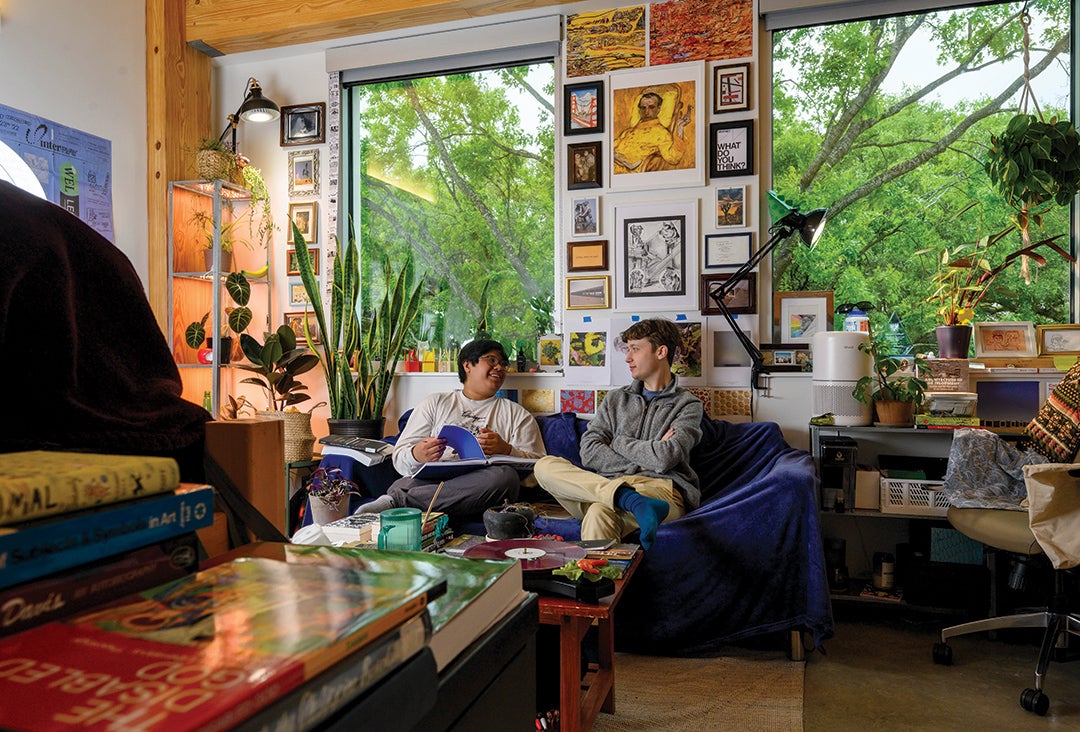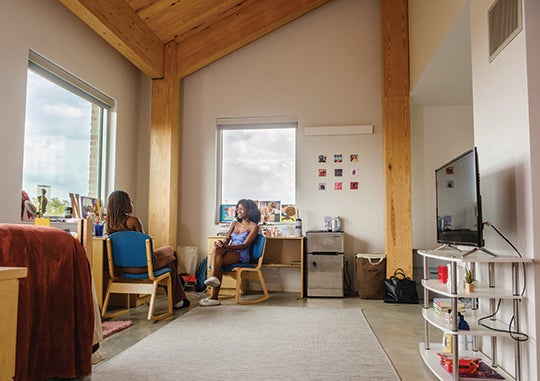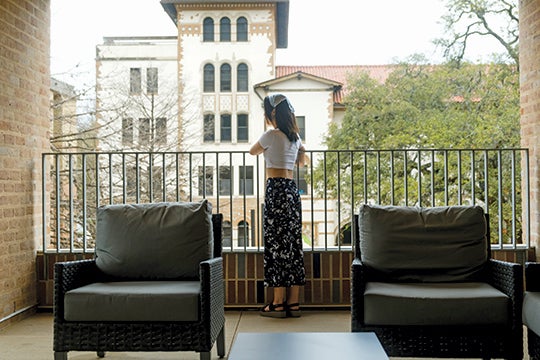First Impressions: Hanszen's New Wing
The mass timber wing welcomes students with natural grace.

Spring 2023
By Mabel Tang ’23
In January, I moved into a single room in the new Hanszen wing for my last semester at Rice, and right away, I was struck by the quaint intimacy of the wooden panels of the ceiling, the spaciousness of the room and the copious amounts of natural light that streamed through the windows. Compared to the sterility of the stucco walls and the windows shoved into the corners of my previous suite in Old Sid, the natural elements were refreshing and comforting.
Hanszen officially welcomed students to its new mass timber-constructed wing starting this past January. The spacious addition features five floors, 166 beds, 38 singles and two residential associate apartments. Construction began following the demolition of the previous wing in May 2021 and was projected to be completed by the beginning of the fall 2022 semester. However, delays caused by the COVID-19 pandemic’s effect on the supply chain and barriers to transportation at the U.S.–Canada border pushed completion back, said Mark Ditman, who was the associate vice president of housing and dining during the course of the project.

My new home is certainly unique. Unlike traditional American wood light-frame construction, which relies on smaller interspaced units fastened together to form a building’s skeletal structure, mass timber is a construction technique that laminates smaller pieces of wood into large structural elements such as beams and supports. Mass timber construction is also highly industrialized, which allows for greater precision, control and quality.
Rice architecture professors Jesús Vassallo and Albert Pope, whose 2016 model of a mass timber skyscraper for Detroit was accepted to the International Architecture Exhibition at the Venice Biennale, are Rice’s experts in this area. According to Vassallo, the benefits of using mass timber include reduced construction time and costs, a cleaner and safer construction site, and reduced carbon emissions.
“Architecture, engineering and construction technology today, as an industry, is responsible for a very large percentage of carbon emissions,” Vassallo said. “Mass timber allows you to build buildings that are carbon neutral.”
Ditman first learned about mass timber construction at a conference in Portland, Oregon, where he was impressed with not only the ability to construct tall residential buildings from mass timber but also the bucolic nature of living in a building with natural elements and large amounts of natural light — features that promote wellness.
Pope sees similar benefits. “When you actually see a piece of natural material in a building, it humanizes it, which is very different from a building of steel or concrete,” he said.
The new Hanszen wing retains some of the iconography — including blue mosaic tiles and college crests — that characterized the building it replaced. Its exterior also resembles the color scheme of Hanszen’s old wing. However, the new wing boasts reading nooks, three outdoor terraces, ADA-accessible rooms and an elevator — accommodations that the previous building did not have. Focus groups with students helped establish what features the new building should have and what functions they would serve, Ditman said.
One big concern for Hanszenites was the rebuilding of college culture after being separated between the old section of Hanszen and Old Sid for a year and a half.

“I see a lot of opportunities to rebuild culture,” said Dani Knobloch ’23, Hanszen president. “So many more people want to live on campus, and given the proximity of the new building, there are more people in and around the commons.” Students are already planning movie nights and other activities for the new spaces, Knobloch said.
According to Ditman, Pope and Vassallo, Rice was able to move forward with completing the mass timber wing early enough that we are considered an early adopter in the Southeast. The three of them see the new Hanszen wing as a way to contribute to Rice’s goal to achieve carbon neutrality by 2030, as well as an opportunity to educate both Rice students and the larger community on the benefits of mass timber construction.
“For the administration, it has been very useful to see firsthand the quality of spaces that you can create in this way,” Vassallo said. “Rice has a tradition of having a campus that is an arboretum. Suddenly, the university understands that this is an asset. I think this is going to be one of the things that will reshape our identity and how we look forward as a university.”
Although I’m only here for my final semester at Rice, I’m excited for future Hanszenites to find a similar comfort in their new homes and begin to forge a new college culture to carry on our motto, “Hanszen Family Heart.”
